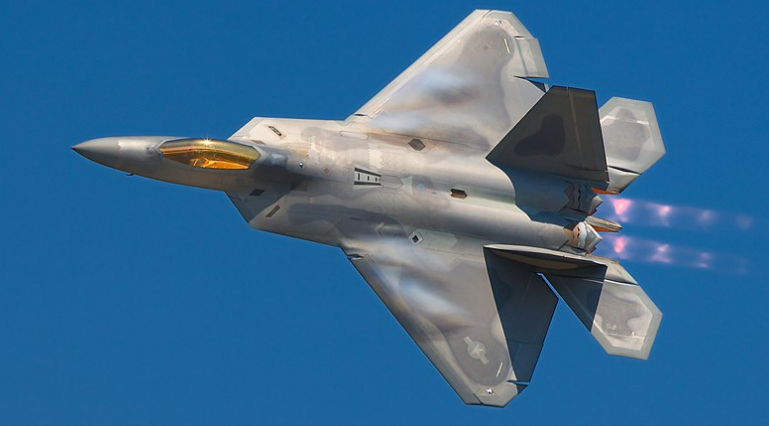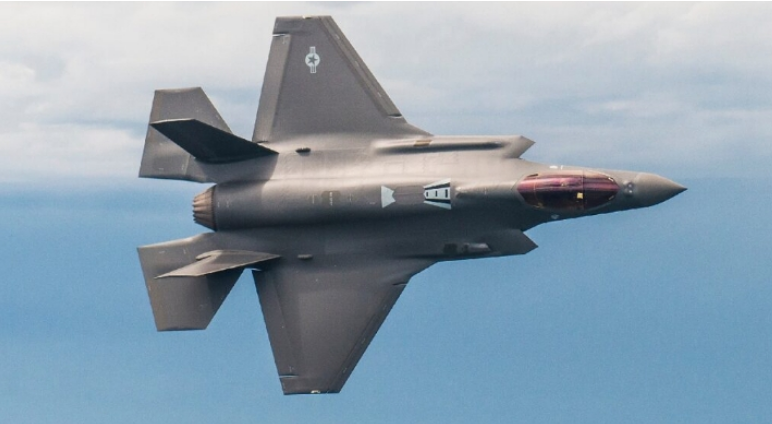With Russia and China improving their air defenses at a startling rate, Congress has ordered the U.S. Air Force to consider restarting production of the F-22. The aircraft is considered superior to the F-35 in certain capabilities relevant to the counter-air and destruction of enemy air defenses missions, but it costs twice as much to procure and twice as much to operate. Here are some of the other key differences between America’s two fifth-generation fighters.
F-22

The F-22 Raptor is a very expensive and effective fighter jet that entered service in the United States Air Force in December 2005. Unlike some other fighter jets like the F-35 Lightning II, the export sale of the F-22 Raptor is forbidden by United States federal law, making the F-22 Raptor the “trump card” of the United States, ensuring it air superiority over every other country in the world, including China and Russia.
The United States Air Force claims that the F-22 is the most advanced and effective fighter aircraft in the world, unmatched by any known or projected fighter aircraft. It is classified by the US military as a fifth generation fighter jet and a fourth generation stealth aircraft.
F-35

The F-35 Lightning is a stealthy, supersonic, multirole fighter designed to meet the requirements of the United States and allied defense forces worldwide for an affordable next generation fighter. It replaces a wide range of aging fighter and strike aircraft currently in the inventories of the U.S. Air Force, Navy, Marine Corps and allied defense forces.
F-35 Lightning integrates advanced stealth technology into a highly agile, supersonic aircraft that provides the pilot with unprecedented situational awareness and unmatched lethality and survivability.
History
When the idea for an advanced tactical fighter was conceived, Jimmy Carter was still in the White House, East and West Germany were a thing, and al-Qaeda had not been created. Back in 1981, the Air Force was already looking to replace the F-16 and F-15, both children of the ’70s.
In 1985, a request for proposal was issued for an advanced tactical fighter to counter emerging Soviet threats. Stealth and supercruise speed were the emphasized characteristics, and Lockheed and Northrop were the two companies chosen to compete. In 1990, the first YF-22 flew, and Lockheed’s design was chosen in 1991.
It wasn’t until 1997 that the first actual F-22 was delivered to the Air Force. Flight testing began at Edwards AFB, CA, and the Combined Test Force received, in total, eight more F-22s to wring out.
The F-35 came out of a desire to create a Joint Strike Fighter (JSF) in the ’80s and ’90s and consolidate combat aircraft requirements into one neat package.
The Marines wanted a jet to replace the Harrier jump jet, and the Air Force and Navy wanted a multi-role attack/fighter replacement for the F-16, F-14, and A-6. When all the requirements were rolled into one, in 1997 Lockheed and Boeing were chosen to produce concepts.
The Marines wanted a jet to replace the Harrier jump jet, and the Air Force and Navy wanted a multi-role attack/fighter replacement for the F-16, F-14, and A-6. When all the requirements were rolled into one, in 1997 Lockheed and Boeing were chosen to produce concepts.
As a joint strike fighter, the F-35 was developed in cooperation with allied nations. Americans, British, Italians, Australians, and others all had a hand in the F-35. After a review of Lockheed and Boeing’s prototypes, Lockheed was chosen to develop the JSF.
While both aircraft have futuristic shapes and stealth technology, they were built for two distinct roles. The Raptor is the air-superiority fighter made to out-maneuver and out-perform in a dogfight. The Lightning II is a strike-fighter, meant to strike ground targets hard and fast, and clear the way for advancing forces.
The roles they fulfill are complementary, and the F-22 could even act as an escort for the F-35, ensuring enemy fighters stay off its back. The F-35 can fly at speeds as high as 1.6 Mach and can carry an internal payload of four weapons without compromising its stealth.
Key Differences
The F-22 Raptor and the F-35 Lightning have a few things in common, but the most fundental reason for the both of them is to have a Minimal Radar Cross Section (RCS), meaning that even though it’s not going to be completely invisible in the enemies radar, it would combine both absorbing the radio waves as well as deflecting the radiowaves at a different direction, giving the size of both aircraft a very small dot on the radar screen.
Both the F-35 and the F-22 were built with attention to detail including: alignment to edges, use of Radar Absorbant Materials, reducing infrared signature, fixed geometry to serpentine inlets (F-22) / forward swept divertless inlets (F-35), and making sure that the pilots helmet and cockpit interior deflects as little radar as possible and ensuring that even the weapons are all hidden inside the weapons bay.
While the F-35 is a single-seat, single-engine, stealth multirole fighter jet capable of performing ground attacks and air defense missions, the F-22 Raptor is a single-seat, twin-engine, fifth-generation, tactical fighter aircraft specializing in air dominance.
The F-22 can ramp it up all the way to 2.25 Mach. It climbs at a rate of 62,000 feet per minute whereas the F-35 climbs at 45,000 feet per minute.
The F-22 has one main weapons bay on the aircraft centerline on the belly, and 2 secondary weapons bays on either side of the inlets. The F-35 on the other hand has 2 primary weapons bays which straddle the aircraft centerline and are slightly off angle, coming together at the end.
F-22 is twin engine fighter along with 2D thrust vectoring, while F-35A is single engine fighter which uses thrust vectoring but only for landing and takeoff.
The F-35 is not just capable of independent action due to its unique sensing abilities. It is also capable of sharing data with all aircraft on the network. Its sensor suite advances its capability to disseminate the acquired information outside of areas, which stand out of reach of generic aircraft.
F-22 Raptor vs F-35: Key Takeaways
| Feature | F-22 Raptor | F-35 Lightning |
|---|---|---|
| 1. Primary Role | Air Superiority Fighter | Multirole Fighter |
| 2. Manufacturer | Lockheed Martin | Lockheed Martin |
| 3. Production Years | 2005-2011 (Production Ended) | Ongoing Production |
| 4. Maximum Speed | Mach 2.25 (approximately 1,500 mph) | Mach 1.6 (F-35A), Mach 1.61 (F-35B/C) |
| 5. Stealth Capabilities | Very High | High |
| 6. Number of Engines | Twin-engine | Single-engine |
| 7. Thrust Vectoring | Yes | No |
| 8. Crew | Single-seat | Single-seat (F-35A/C), Single-seat or two-seat (F-35B) |
| 9. Weapons Bays | 2 internal | 1 internal |
| 10. External Hardpoints | Limited (4) | Multiple (up to 10) |
| 11. Range (with drop tanks) | Approximately 1,600 miles | Approximately 1,200 miles (F-35A), Approximately 900 miles (F-35B), Approximately 1,350 miles (F-35C) |
| 12. Cost (per unit) | Approximately $377 million (2009) | Approximately $80 million (F-35A), Approximately $115-120 million (F-35B), Approximately $120-125 million (F-35C) |
| 13. Total Produced (as of 2021) | 195 | Over 700 (across all variants) |
| 14. Variants | F-22A (Air Force) | F-35A (Conventional Takeoff and Landing), F-35B (Short Takeoff and Vertical Landing), F-35C (Carrier Variant) |
| 15. Primary Users | U.S. Air Force | U.S. Air Force, Navy, Marine Corps, Several Allied Nations |